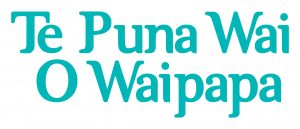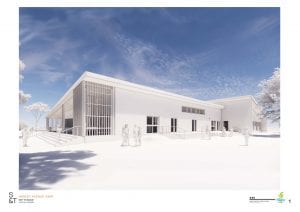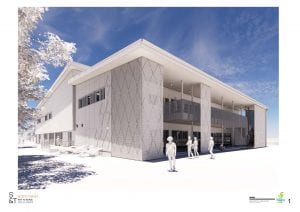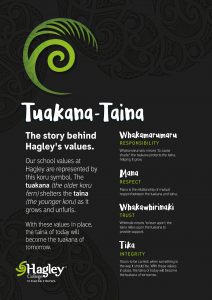Te Kete Kōrero o te Kura The Cultural Narrative of the School
We acknowledge Ngāi Tūāhuriri as mana whenua of this takiwā. We appreciate and honour our partnership with Ngāi Tahu and Ngāi Tūāhuriri in developing and celebrating our bicultural narrative. This kete is intended to record key aspects of that narrative.
NGĀ INGOA
Background to our Māori name, Te Puna Wai o Waipapa
n 1991, Ngāi Tahu kaumātua, Waha Stirling, gifted our kura the title ‘Te Puna Wai o Waipapa’, which means the freshwater spring of the Waipapa area. This name honours the important history of our kura. Te Puna Wai o Waipapa was, and is, a place of natural springs where Māori would come to collect water. In many respects, the role of this place is now is similar, with people across this city coming here for what the school offers as a regional hub for learning.
The names of our buildings
Ngāi Tahu has also given us names for our new buildings that are linked to ‘Te Puna Wai o Waipapa’ and the significance of the whenua the school stands on:
- Auripo, the large hub built near the Student Centre, is named to represent the swirls seen in a body of water. This represents the creativity of our students and their work, a flow-on effect from one eddy to another.
- The name Wainuku is for the building at the front corner of the school site beside Waller Terrace, referring to the body of water underground, the reservoir that wells up to the surface. It is a puna whakaaro and a puna mahi – a think and work tank.
- The name that Ngāi Tahu gifted our Student Centre is Te Tauihu o te Waka, meaning the figurehead or prow of the canoe. Ākonga Tāne Harrison (Ngā Puhi, Tainui) designed the kōwhaiwhai featured in the lettering above the main entrance to the building.
- Our Student Centre’s Ngāi Tahu given name is Te Tauihu o te Waka, meaning the figurehead or prow of the canoe. Ākonga Tane Harrison designed the kowhaiwhai featured in the lettering above the main entrance to the building.
- Our library’s name, Tāheke, continues the theme. This name refers to the flow of water, the essence of life, and a place where knowledge and enjoyment flow down and refresh.
To view click on the images
Wainuku Auripo
The next stage of our development continues this link to‘Te Puna Wai o Waipapa’:
- The name of the sports hub, Kōmanawa, means water springing up, describing the movement of water to the surface and likening this to the movements in exercise. There is also a connection to manawa which can connect to how the heart is worked in physical activity.
- Pūkaki, our whare ako, is another name for a source of water, but this particular name refers to Pūkaki, the lake which Aoraki feeds into. The image of the tohu that represents Te Puna Wai o Waipapa is in two parts: the above symbol is Aoraki and the bottom is Pūkaki which reflects Aoraki. Aoraki in this sense is the height of excellence and the aspirations of the school, and Pūkaki greets you as you look beyond to Aoraki.
- The green space at the centre of the school is called Waipapa, making a unifying link to the name of our kura.
NGĀ KŌRERO O TE KURA
The cultural narrative in the design of Auripo and Wainuku hubs
Shapes representing harakeke [flax] and pātiki [flounder] are features of these two hubs; harakeke and pātiki have a strong association with the whenua and awa of the Waipapa area.
NGĀ TOHU
Symbols
The koru has been the central symbol for our kura since 1991, when it was introduced at the same time as our name ‘Te Puna Wai o Waipapa’. In the naming document gifted to our kura, Ngāi Tahu regard the unfolding fern frond of the koru as symbolic of new life, new beginnings, hope, a new start, personal growth, nurturing, and a new phase in life. This aligns strongly with the kaupapa of our kura. The koru is central to our whakatauākī “Ka puāwai te koru, ka puāwai te tangata” [As the koru opens, so too does the person] developed by our former kaiārahi Regan Stokes..
The first version featured an unfurling koru and was our logo until 2014.
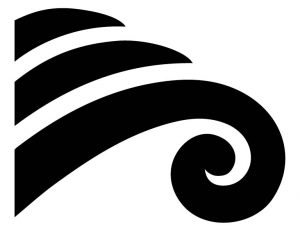
The logo was redeveloped into the current design which features prominently in our kura.

The concept of Tuakana Taina builds on our central symbol and the Tuakana Taina symbol is another iteration of the koru.
It is central to how we want our ākonga to nurture each other and to grow during their time at our kura. Our values – whakamarumaru, mana, tika, whakawhirinaki – are central to how this growth occurs and to how we treat each other.
Click on the image to view
The Tuakana Taina Award is our kura’s premier award. One award is presented at each year level annually to the ākonga who lived out our school’s values.
NGĀ INGOA PĀKEHĀ
Background to our English name, Hagley
Our school’s English name has a link to one of Canterbury’s founders. It was named ‘Hagley High School’ in 1966 because of its location opposite Hagley Park. The park was named after Hagley Park in England, the country estate of Lord Lyttelton, the chairman of the Canterbury Association which founded this province. Hagley High School was formed in the 1960s by the amalgamation of two schools, Christchurch West High School [which was on this site] and another high school, Christchurch Technical College [previously on the Ara site]. The name was altered to Hagley Community College in 1991 which is still our official name, although we are known now as Hagley College.
TE WHAKAPAPA O TE KURA
Our history
We recognise our whakapapa, our genealogy, as a kura that has transformed itself over the history of Ōtautahi from its earliest days, as the city’s oldest state secondary school:
- Te Puna Wai O Waipapa, Hagley Community College: 1991 – current day
- Hagley High School 1991 – 1966
- Christchurch West High School 1965 – 1936 and Christchurch Technical College 1965 – 1906
- West Christchurch District High School 1935 – 1904
- West Christchurch School 1903 – 1883
- Christchurch West Borough School 1882 – 1874
- Christchurch High School 1873 – 1858, also known in its early years as the Boys Academy or the Christchurch Academy
NGĀ RĀKAU HIRA
Significant Plantings
16 cherry blossom trees and a plaque in front of Auripo commemorate the 16 decades since the school opened in 1858.
TE TAE O TE KURA
School colour
The teal colour that features in our kura makes a link to Hagley High School. Teal was the designated school colour when Hagley High School was formed in 1966.
